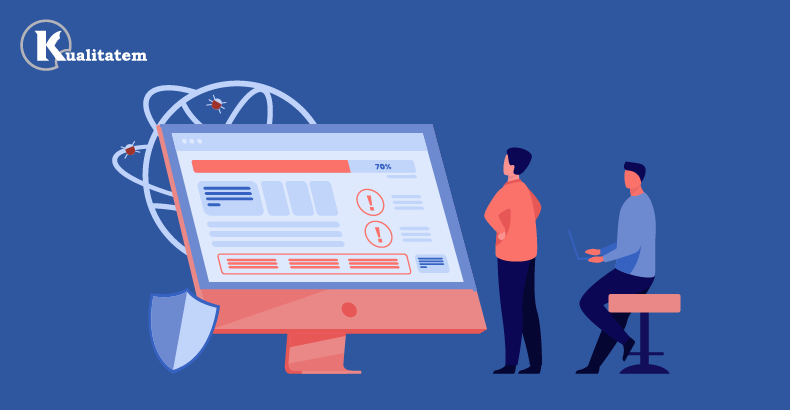Mobile App Performance Testing: Navigating Devices and Network Challenges

- December 18, 2023
- admin
More and more individuals ditch their personal computers or laptops for smartphones. Nowadays, smartphones can do a lot of things. They can be used to take photos and videos, edit videos, keep in contact with loved ones, read books, and many other tasks. That being said, there are around 6.92 billion smartphone users in the whole world.
As people use their phones for many things, new apps are coming out, with customers having higher demands by the day. So, QA teams are left to do more mobile app testing to make sure the programs meet all requirements. However, doing this can be a huge challenge due to the different devices and networks people use.
If you are tasked with performance testing services soon, here are the most common challenges you may experience.
Network Challenges
Internet use is very widespread today. With an increased number of users and a desire for stronger connection, technology had to find ways to provide what the customers wanted. All mobile devices can connect to different networks, such as Wi-Fi, 3G, 4G, and 5G.
However, when you are doing automation testing on networks, there may be a few challenges. It’s hard to make things work considering how much mobile applications depend on good network connectivity. Not to mention that the networks change as users keep moving from one place to another.
As a developer, you have a responsibility to make an app function correctly on all networks.
Device Fragmentation
With how many devices are available nowadays, doing mobile app performance testing can be extremely difficult. Each device has different specifications and features, including different hardware configurations, resolutions, and screen sizes among other things. So, it can be challenging to make an app compatible with every app.
Data Privacy and Security
The safety and privacy of the user is one of the most important things. When you are doing app testing, you must also analyze the security of the connections and the data encryption. This will tell you how vulnerable an app is to potential attacks.
To be able to make things as secure as possible, you will have to simulate attacks and discover defects that can be solved later on.
Different Operating Systems
Another challenge comes from the fact that various devices will run on different platforms, such as iOS and Android. They have their own restrictions and features, and you will have to test on both platforms if you want the app to be accessible to a larger audience.
Luckily, you can always use testing tools to streamline the process.
Performance Across Operating System Versions
Beyond different operating systems, variations in versions also pose a challenge. For both iOS and Android, users may be using different versions of the operating system. Each version can introduce new features, updates, or constraints that impact the performance of your mobile app. Ensuring compatibility across various OS versions is crucial for providing a seamless user experience.
User Interactions and Context Switching
Mobile users often engage in various activities simultaneously, such as receiving calls, notifications, or switching between apps. Performance testing should consider how well your app handles interruptions and context switching. Ensuring that the app resumes smoothly after interruptions is vital for user satisfaction.
Battery Consumption
Mobile app performance is closely linked to battery consumption. Users expect apps to be efficient in their energy usage to avoid draining their device’s battery quickly. Performance testing should assess how the app impacts battery life under different usage scenarios, helping you optimize energy efficiency.
Localization and Globalization Challenges
Mobile apps are used globally, making localization and globalization crucial aspects of testing. Challenges may arise in terms of language support, cultural nuances, and regional differences. Performance testing should account for these factors to ensure that the app functions seamlessly across diverse international user bases.
User Interface Responsiveness
The responsiveness of the user interface (UI) is a critical factor in mobile app performance. Testing should evaluate how quickly the app responds to user interactions, such as taps, swipes, and gestures. Delays or lags in UI responsiveness can lead to a poor user experience and should be addressed during performance testing.
Memory Usage and Resource Management
Mobile devices have limited resources, including memory and processing power. Efficient memory usage and resource management are essential for preventing app crashes, slowdowns, or competing with other apps for resources. Performance testing should include scenarios that assess how well the app manages resources under varying conditions.
App Installation and Updates
The process of installing and updating an app can impact the user experience. Performance testing should include scenarios that simulate app installation, updates, and uninstallation to ensure a smooth and reliable process for users.
Offline Functionality
Mobile users often experience fluctuations in network connectivity. Testing the app’s performance under offline conditions is crucial to assess how well it functions without a stable internet connection. This includes testing offline data synchronization, error handling, and the overall user experience in offline mode.
Regression Testing for Updates
As the mobile app evolves with updates and new features, regression testing becomes essential. Ensuring that new updates do not introduce performance issues or break existing functionalities is crucial for maintaining a positive user experience.
Real User Scenarios and Load Testing
Performance testing should extend beyond individual user scenarios to include load testing that simulates real-world usage patterns. This helps identify potential bottlenecks and assess the app’s performance under varying levels of user traffic and activity.
The Bottom Line
In mobile app automation testing services, you will always face various challenges. These are brought by factors such as the use of different devices, networks, platforms, and so on. But as challenging as things might be, doing as many tests as possible ensures that the product release will be successful and all your customers will be satisfied, so it’s worth the trouble.











